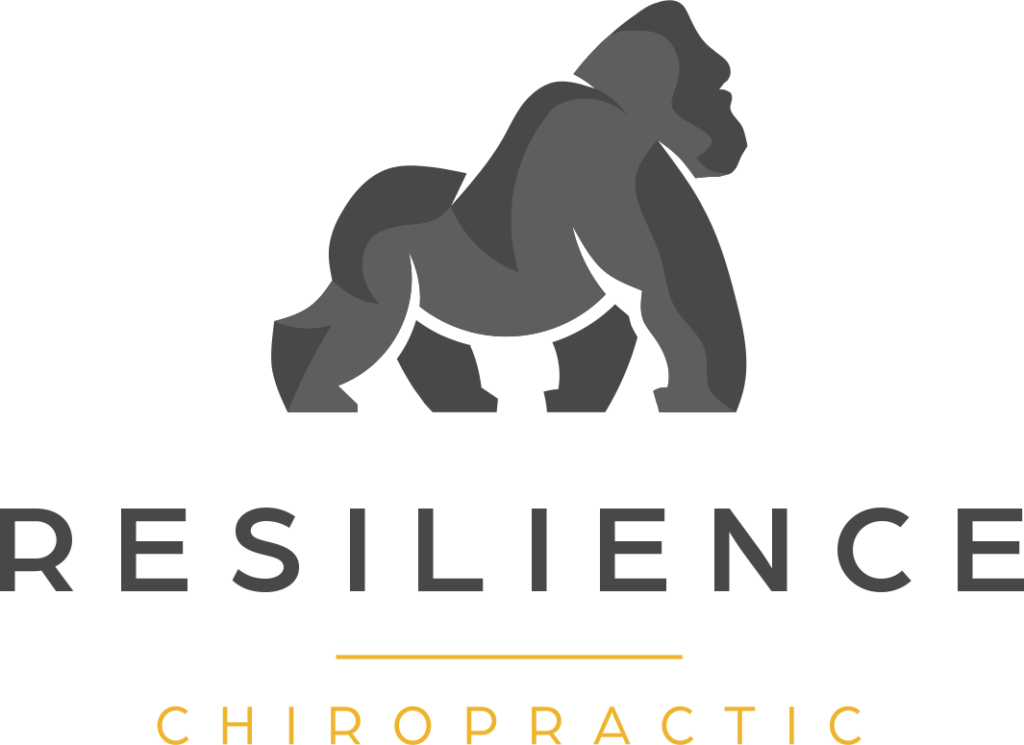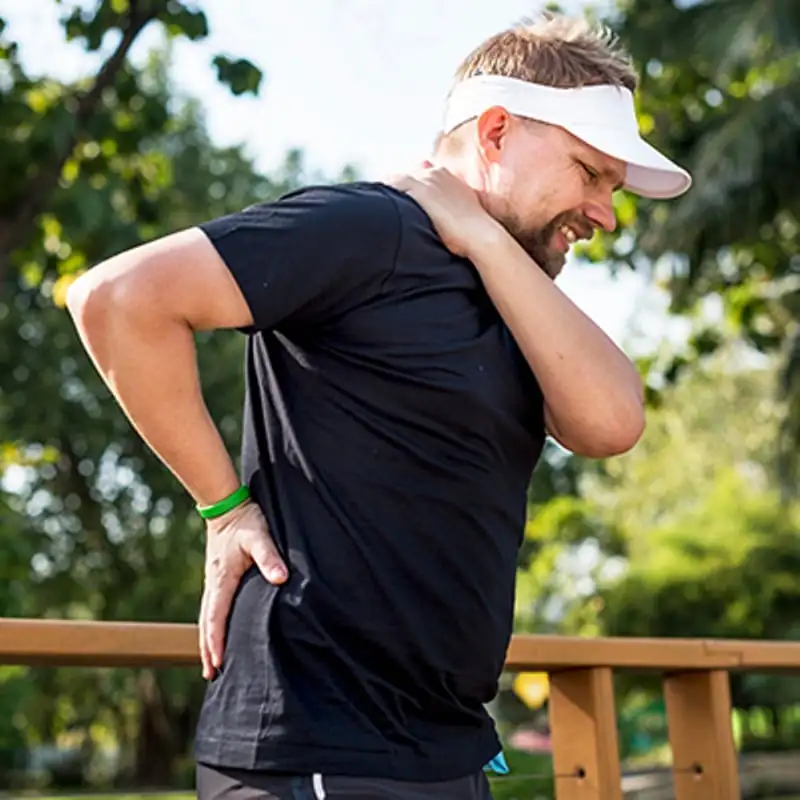As your local chiropractor, I want to highlight how your daily habits might be contributing to upper back pain, often without you even realizing it. Understanding the underlying causes is crucial for finding effective relief. Many of us unknowingly adopt poor posture at our desks or engage in repetitive movements that strain our muscles, leading to persistent discomfort.
The good news is that there are practical stretches and exercises that can help ease this pain. By incorporating these strategies into your routine, you can experience not just immediate relief but also long-term benefits that enhance your overall well-being. So, what techniques should you consider integrating into your daily life for lasting results? Let's explore some options together that can help you feel better and improve your posture!
Understanding Upper Back Pain
As a local chiropractor, I'd like to take a moment to talk about upper back pain—a common issue that many people experience but may not fully understand. This type of pain can creep up on you, leaving you feeling stiff and uncomfortable, and it often stems from various factors, such as poor posture, muscle strain, or even stress.
While it mightn't always be as severe as lower back pain, upper back discomfort can significantly impact your daily life. By educating yourself on the causes and symptoms of upper back pain, you can take the first steps toward finding effective relief.
You might find that spending long hours hunched over a desk or constantly looking down at your phone contributes to your upper back discomfort. This prolonged strain on your muscles can lead to tension and stiffness.
Additionally, emotional stress can manifest physically, causing tightness in your upper back that you may not even realize is happening. It's important to be mindful of how stress affects your body; the connection is often stronger than we think.
Muscle imbalances also play a critical role in upper back pain. If certain muscles are overly tight, others may become weak, leading to discomfort.
As your chiropractor, I can help you identify these imbalances and explain why you might be experiencing pain. In some cases, underlying issues like a herniated disc or arthritis could be contributing factors, although these are less common.
Recognizing the signs of upper back pain early on is crucial. If you find yourself frequently adjusting your posture or experiencing discomfort during daily activities, it's important to take action.
Effective Stretches and Exercises
As a local chiropractor, I want to emphasize the importance of incorporating effective stretches and exercises into your daily routine, especially when dealing with upper back pain. These activities can significantly relieve tension, enhance flexibility, and build strength, ultimately helping to prevent future discomfort.
One of the first stretches I recommend is the cat-cow stretch. Begin by positioning yourself on all fours. Arch your back upwards like a cat, then gently dip it down while lifting your head and tailbone. This movement is fantastic for mobilizing your spine and alleviating tightness. Aim to hold each position for about five seconds and repeat this sequence ten times.
Another excellent stretch is the doorway stretch. Stand in a doorway with your arms raised at shoulder height, placing your palms against the door frame. Lean forward slowly until you feel a stretch across your chest and shoulders. Hold this position for 20 to 30 seconds and repeat it three times. This stretch can open up your chest and counteract the effects of poor posture.
For strengthening your upper back, I recommend the bent-over row. Grab a pair of light dumbbells, hinge at your hips while keeping your back straight, and pull the weights towards your ribcage, squeezing your shoulder blades together as you do so. Performing three sets of ten repetitions can greatly enhance your upper back strength and support your spinal health.
Lastly, don't overlook the child's pose. Kneel on the floor, sit back on your heels, and stretch your arms forward on the ground. This restorative position helps relax the spine and release built-up tension.
Incorporating these stretches and exercises into your routine regularly can provide significant relief from upper back pain while also improving your overall mobility.
Posture Improvement Techniques
As your local chiropractor, I want to emphasize the importance of improving your posture, especially if you're experiencing upper back pain. Maintaining proper alignment is crucial, as it significantly reduces strain on your muscles and spine, leading to less discomfort and more ease in your daily activities.
Let's start with how you sit and stand. When you're seated, ensure your feet are flat on the floor and your knees are bent at a 90-degree angle. It's essential to use a chair that provides support for your lower back; if necessary, I recommend adding a cushion to enhance comfort.
Next, let's talk about your screen height. If you spend time working on a computer, it's vital that the top of your monitor is at eye level. This adjustment prevents you from leaning forward excessively or straining your neck, which can exacerbate pain. For those using laptops, I suggest investing in a stand or an external keyboard to create a more ergonomic workspace.
When it comes to standing, aim to distribute your weight evenly between both feet. Avoid locking your knees and engage your core muscles to help support your spine. A great exercise to incorporate is the wall angel. Stand with your back against a wall, keeping your feet a few inches away. Flatten your back against the wall and raise your arms to form a "W" shape, then extend them into a "Y" position. This helps to strengthen your shoulder and back muscles.
Lastly, I encourage you to set reminders to check your posture throughout the day. A simple sticky note on your desk can serve as a helpful cue to straighten up.
Lifestyle Changes for Relief
As a local chiropractor dedicated to helping you alleviate upper back pain, I want to emphasize how critical lifestyle adjustments can be in your healing journey. Incorporating regular physical activity into your daily routine is one of the most powerful changes you can make.
I recommend exercises that focus on strengthening your back and core muscles, as they play a vital role in supporting your spine. Activities like yoga, swimming, and Pilates are fantastic options, as they not only improve flexibility but also enhance muscle strength in these key areas.
Sleep is another essential component of your overall well-being. It's important to ensure that your mattress provides adequate support for your body. I suggest using a pillow that keeps your neck aligned with your spine.
Poor sleeping positions can exacerbate upper back pain, so strive to maintain a neutral position while you sleep to promote optimal spinal health.
Nutrition is equally important and can significantly impact your body's ability to heal. A balanced diet rich in anti-inflammatory foods can help reduce pain and discomfort.
Focus on incorporating plenty of fruits, vegetables, lean proteins, and healthy fats into your meals while minimizing processed foods and sugars.
Managing stress is also crucial, as high levels of stress can lead to muscle tension, particularly in the upper back. I encourage you to explore mindfulness techniques such as meditation or deep-breathing exercises, which can be instrumental in alleviating tension and promoting relaxation.
Lastly, let's talk about your daily ergonomics. If you spend long hours at a desk, it's essential to evaluate your workspace setup.
Your monitor should be at eye level, and your chair should provide adequate support for your lower back. Proper ergonomics can prevent unnecessary strain and promote better posture.
When to Seek Professional Help
As a local chiropractor, I want to emphasize the importance of recognizing when to seek professional help for upper back pain. If you find that your discomfort lingers for more than a few weeks, even after trying self-care remedies, it's a strong indication that it's time to consult a healthcare provider, such as a chiropractor. Ignoring persistent pain can lead to more significant issues down the line, and we want to help you avoid that.
You should also consider reaching out if your pain is particularly severe or if you experience additional symptoms like numbness, tingling, or weakness in your arms or legs. These could be signs of nerve compression or other serious conditions that need immediate evaluation. If your pain arises after an injury or accident, it's crucial to get assessed to rule out any fractures or significant injuries.
If your upper back pain is interfering with your daily life—whether it's affecting your work, sleep, or ability to exercise—please don't hesitate to seek professional guidance. As a chiropractor, I can develop a personalized treatment plan tailored to your needs, which may include spinal adjustments, physical therapy, and holistic approaches to help alleviate your pain and restore function.
Additionally, if you notice changes in your posture or if your back pain is accompanied by symptoms like unexplained weight loss, fever, or swelling, it's important to seek help right away. These symptoms could indicate underlying health issues that require prompt attention.
Conclusion
As a local chiropractor, I want to emphasize that managing upper back pain is absolutely achievable with the right approach. It's important to first understand the underlying causes of your discomfort. Many times, tension can stem from poor posture or muscle imbalances, which we can help address through targeted chiropractic care.
Incorporating effective stretches into your daily routine can also be incredibly beneficial, as they help to alleviate tension and improve flexibility. Additionally, focusing on your posture—whether you're sitting at a desk or engaging in everyday activities—can make a significant difference in your overall well-being.
I encourage you to consider lifestyle changes that support a healthier lifestyle, such as regular exercise, proper hydration, and balanced nutrition. These small adjustments can greatly enhance your body's ability to heal naturally.
If you find that your pain continues, don't hesitate to seek professional help. Chiropractic care offers a holistic approach to pain relief, focusing on your body's natural ability to heal itself. Together, we can create a tailored plan that suits your individual needs. Remember, taking proactive steps today can lead to a healthier, pain-free tomorrow. You deserve to feel your best, and I'm here to support you on that journey!



